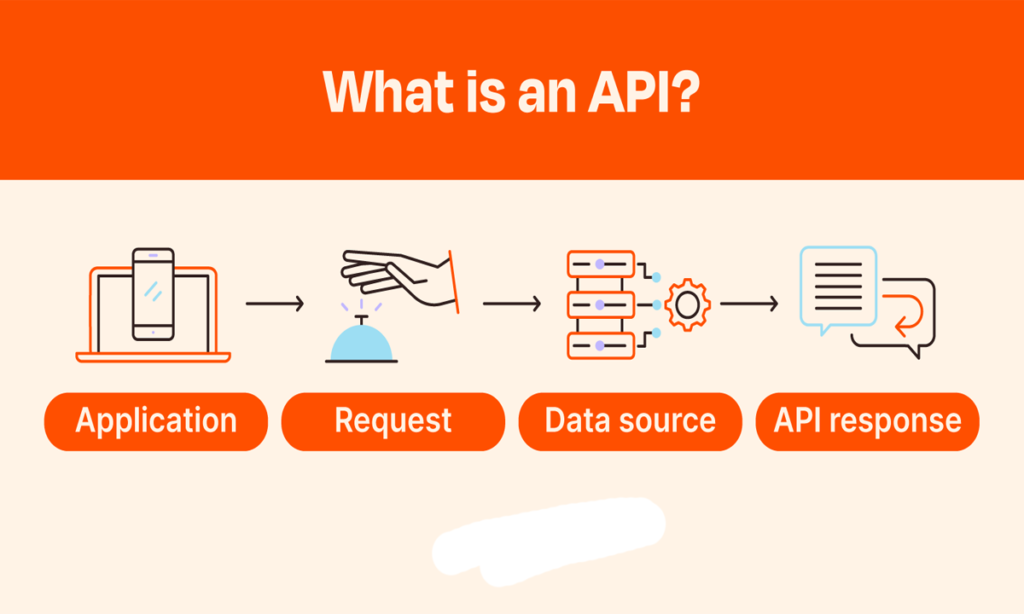In the dynamic world of programming and software development, APIs – Application Programming Interfaces – serve as bridges or links that smoothly connect different platforms, applications, or services. Indeed, everything from weather apps to payment gateways, social media analytics, and artificial intelligence tools is powered by them.
But before you can start using an API, you need an API key—a crucial ingredient that unlocks access to the API. Happily, most API providers have free-tier plans available for your testing and usage.
This walk-through will take you from understanding what an API key is to getting a free one, testing it, how to manage its usage, to even securing it. By the end, you’ll have a detailed insight into how to navigate the world of APIs like a pro.
What is an API Key?

An API key is an identification string of characters issued by an API provider when authenticating the requests to the API. It can be seen like a credential through which the provider will know which application or user is accessing their services.
Also Read More: Most popular web development technologies
How Does It Work?
You insert the key, either in the request header or as a query parameter, while making a request to an API. The server then checks the validity of the key in order to establish if the request has been allowed.
For Example:
https://api.weatherapi.com/v1/current.json?key=your_api_key&q=London
Here, your_api_key authenticates the request for weather data about London.
Key Features of API Keys
- Unique Identifier: Each key is associated with a certain user or a project.
- Tracking usage: Users monitor API usage to ensure that you never exceed the limits.
- Access control: Some APIs allow you to control access by tagging keys with an IP address or domain.
Why Do You Need an API Key?
API keys fulfill a host of purposes, making them essential for developers as well as businesses.
Benefits of API Keys
- Authentication and Security: They authenticate that the request is originating from a valid source.
- Rate Limiting: To avoid abuse, allow only a set number of requests within a time frame.
- Access Control: APIs can limit functionalities based on what a key has access to.
- Monitoring and Analytics: Helps keep track of usage metrics to see how your application interacts with the API.
For example, Google’s APIs use keys to monitor and charge based on usage while maintaining security.
Types of APIs Offering Free Keys
Many platforms have free-tier plans in various categories. It’s time to enumerate the most popular types.
Weather APIs:
- OpenWeatherMap: Up to 60 calls per minute on the free plan.
- WeatherAPI: Access to real-time and historical weather data.
Maps and Location APIs:
- Google Maps API: Offers a $200 monthly credit.
- Mapbox: Free-tier plans with customizable map features.
Social Media APIs:
- Twitter API: Free basic access for fetching tweets or analytics.
- Facebook Graph API: Allows integration with Facebook features.
Payment APIs:
- Stripe API: Free to integrate with basic functionality.
- PayPal API: Ideal for e-commerce applications.
Other Niche APIs:
- NewsAPI: Fetch global news headlines for free.
- Unsplash API: Access millions of free, high-quality images.
Step-by-Step Guide to Obtaining an API Key for Free
Follow these steps to secure an API key and start using it in your projects.
Step 1: Choose the Right API
Identify your project requirements and find an API that meets your needs.
How to Choose an API?
- Define Your Goal:
Example: If you’re building a weather app, search for weather APIs like OpenWeatherMap or WeatherAPI. - Check Free-Tier Limitations:
Read the documentation to ensure the API provides sufficient access within the free plan. - Compare Features:
Evaluate speed, data accuracy, and compatibility with your tech stack.
Use platforms like RapidAPI or ProgrammableWeb to explore APIs.
Step 2: Register with the API Provider
Once you’ve selected an API, visit its official website to create an account.
Steps to Register:
- Navigate to the API provider’s website.
- Click on Sign Up or Get Started.
- Provide necessary details, including your name, email, and password.
- Verify your email by clicking on the confirmation link sent to your inbox.
Pro Tip: Use a project-specific email to keep API-related updates organized.
Step 3: Generate Your API Key
After registration, you can generate an API key from the provider’s dashboard.
Steps to Generate:
- Log in to your developer account.
- Find the API Keys or Credentials section.
- Click Generate New Key and name it descriptively (e.g., “WeatherAppKey”).
- Save the key securely. Some platforms won’t show it again after creation.
Step 4: Test Your API Key
Before integrating the API into your application, test the key to ensure it works.
Testing Tools:
- Postman: Use it to send requests and validate responses.
- cURL: A command-line tool for testing APIs.
- Example:
curl -X GET "https://api.example.com/data?apikey=your_api_key"- Sample Code: Run the example scripts provided in the API documentation.
Managing and Optimizing Free API Key Usage
API keys in free-tier plans often come with restrictions. Here’s how to make the most of them:
- Monitor Usage:
Regularly check your API dashboard to track usage and avoid exceeding limits. - Cache Responses:
Reduce repetitive API calls by caching frequently accessed data locally. - Optimize Requests:
Fetch only the data you need. For example, request specific fields instead of the entire dataset. - Leverage Multiple APIs:
Combine free-tier plans from different providers to expand functionality.
Best Practices for Securing Your API Key
API keys are sensitive and must be handled securely to prevent unauthorized access.
Tips for Securing API Keys
- Environment Variables: Store keys in
.envfiles instead of hardcoding them. - Restrict Access: Configure IP-based or domain-based restrictions.
- Rotate Keys: Periodically update your keys to enhance security.
- Use Encryption: Secure keys using encryption tools or services like AWS Secrets Manager.
If a key is compromised, revoke it immediately and generate a new one.
Real-World Examples: Free APIs to Get Started
Here’s a curated list of free APIs you can explore today:
- OpenWeatherMap API:
Perfect for weather applications, with robust documentation and examples. - Google Maps API:
Offers free mapping and geocoding features, suitable for location-based apps. - Twilio API:
Provides free credits for SMS and voice integration. - NewsAPI:
Fetches headlines from various sources, ideal for news aggregation.
Troubleshooting Common API Key Issues
Even with the best practices, you might face challenges. Here’s how to solve them:
- 401 Unauthorized: Ensure the API key is correctly entered and active.
- 429 Too Many Requests: Reduce call frequency or upgrade your plan.
- Invalid API Key: Double-check the key format and associated permissions.
Advanced Tips: Extending the Value of Free API Keys
Maximize your free-tier benefits with these strategies:
- Use Proxies for Rate Limits: Distribute API calls through proxies to avoid hitting limits.
- Monitor Trends: Use analytics tools to predict and optimize usage spikes.
- Collaborate: Share free-tier APIs within teams to pool resources.
Conclusion: Unlocking the Power of APIs
Securing an API key for free is just the beginning. By following this step-by-step guide, you’ve learned how to choose, register, generate, test, and secure API keys effectively. With this knowledge, you’re ready to leverage the power of APIs, whether it’s building a weather app, integrating payment gateways, or creating innovative tools.
Modern software is held together by APIs, and with free API keys, the sky’s the limit. Dive on in, experiment, and bring those ideas to life.












